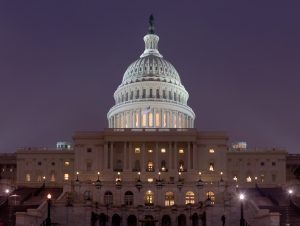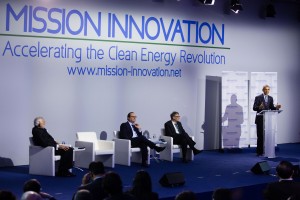121 item(s) were returned.
Solutions Fellow
Center for Climate and Energy Solutions
California has demonstrated leadership in setting ambitious goals for reducing greenhouse gas emissions by setting a target to reduce emissions to 40 percent below 1990 levels by 2030. While California is reducing emissions and expanding clean energy through many means, including a cap-and-trade program, the state appears to be underestimating the effectiveness and readiness of carbon capture technology and how it could help California reach its goal. In consensus comments on the California Air Resources Board’s (CARB) draft 2017 Climate Change Scoping Plan Update, a diverse group of nonprofits (including C2ES); environmental groups; and oil, gas, and ethanol companies outlined… [more]
View InsightManaging Director
The Roda Group
Climate change poses a threat to the safety and prosperity of America’s and the world’s citizens. Every major scientific academy agrees that global warming is real, is mostly caused by humans, and requires urgent action. The signs of climate change are all around us. For example, the volume of the summer Arctic sea ice has dropped about 70% in the past 30 years and global temperatures have set records for the past 3 years in a row. And while most world leaders and climate scientists agree that we should not let the world warm more than +2ºC, we are on… [more]
View InsightOn the fourth day of his administration, President Trump signed multiple executive actions designed to advance the Keystone XL and Dakota Access pipelines, since related memos specifically invited project developers to re-submit applications for permits and approvals to begin or continue construction. Many view these decisions as a signal the president intends to fulfill campaign promises promoting the oil and gas industries, as described in his America First Energy Plan. Pipeline opponents, however, are already preparing for legal battles seeking to block these projects. Keystone XL proponents have consistently argued the pipeline will create thousands of good paying jobs while… [more]
View InsightVisiting Scholar
American Enterprise Institute
When last we joined hands around the ourenergypolicy.org campfire, roasting s’mores and singing songs of camaraderie, we told tales of one particular monster of the dark, to wit, the Obama administration analysis of the social cost of carbon, perhaps the most dishonest exercise in political arithmetic ever produced by the federal bureaucracy. But this is the Beltway: No perfidy goes unrewarded. And so it is with the SCC, now tailor-made for the justification of rules utterly preposterous. Consider for example the Environmental Protection Agency efficiency rule for medium- and heavy trucks, part of the administration’s climate action plan; EPA has… [more]
View InsightAssociate Professor of Environmental Engineering
Rice University
President-elect Donald Trump has only vaguely defined his plans for energy policy, via his website and campaign statements and tweets. As a result, one can only speculate what changes to expect from Trump energy policies. Nevertheless, a recent report by S&P Global Platts aimed to predict how electricity will be generated under Trump energy policies. The analysis assumed Trump would allow subsidies for renewable energy to continue their scheduled scale down through 2020, and enact no new policies to support wind or solar. This is consistent with recent reporting indicating that Trump does not plan to act against renewable energy… [more]
View InsightWith the race for President ending this week, one concern expressed by some has been the lack of any substantive discussion about US energy policy. While Mr. Trump has often mentioned reviving the coal industry as part of a larger emphasis on policies that leverage the country’s domestic energy resources, Secretary Clinton’s campaign has said her policies will look to grow clean energy resources like wind and solar energy. But after three debates, many believe the country needs more information on this topic from both candidates for President. A recent debate (video here) however between campaign advisors for Mr. Trump… [more]
View InsightIn May, the Environmental Protection Agency (EPA) released regulations designed to curb methane (CH4) emissions from new, modified and reconstructed oil and natural gas sources. As part of the Obama administration’s effort to combat climate change, the rule attempts to reduce methane emissions by as much as 45% from 2012 levels by 2025. According to the EPA, methane is the second most prevalent greenhouse gas emitted by humans on a pound for pound basis. Although the atmospheric lifetime of CH4 is much shorter than carbon dioxide (CO2), methane is at least 25 times more potent at trapping heat in the… [more]
View InsightPresident
Reishus Consulting, LLC
The New York Attorney General has been investigating Exxon Mobil for failing to disclose to its investors its climate risk, or the risk that climate change may have on the value of the company’s assets, including its extensive oil reserves, which some claim must remain in the ground if necessary future reductions in carbon emissions are to be achieved. As the controversy around Exxon Mobil’s carbon-related financial reporting continues, other entities are moving forward to address so-called climate change or “carbon asset” risk. In fact, the institutional investment fund CalPERS now requires that companies it chooses to invest in have… [more]
View InsightFounding Director, Initiative on Communication and Sustainability
The Earth Institute, Columbia University
Transitioning to a non-polluting energy menu and safe climate in a world of growing energy needs and persistently abundant fossil fuels is a tough task, whatever policy path you favor. And realistically, there will be no single policy path, as the flexible architecture of the Paris climate agreement reflects. In the United States, for example, there are places where new nuclear plants have a chance, and places where solar and wind power can have a greatly increased role. In every country, in fact, with its own unique energy mix, the challenge posed by simple inertia in physical systems and in… [more]
View InsightAt a recent event hosted by the Hudson Institute, energy professionals gathered to discuss energy issues affecting both the United States and China, with significant discussion centering on how low oil prices generally correlate with economic prosperity and stability – and vice versa. It is projected that China’s oil import dependence will rise from 60% in 2013 to 75% in 2035 and that, in the next 15 years, China will overtake the U.S. as the world’s largest oil consumer. Like the U.S., China’s sustained economic growth is directly influenced by the price of oil. Although crude oil price spikes are… [more]
View Insight








